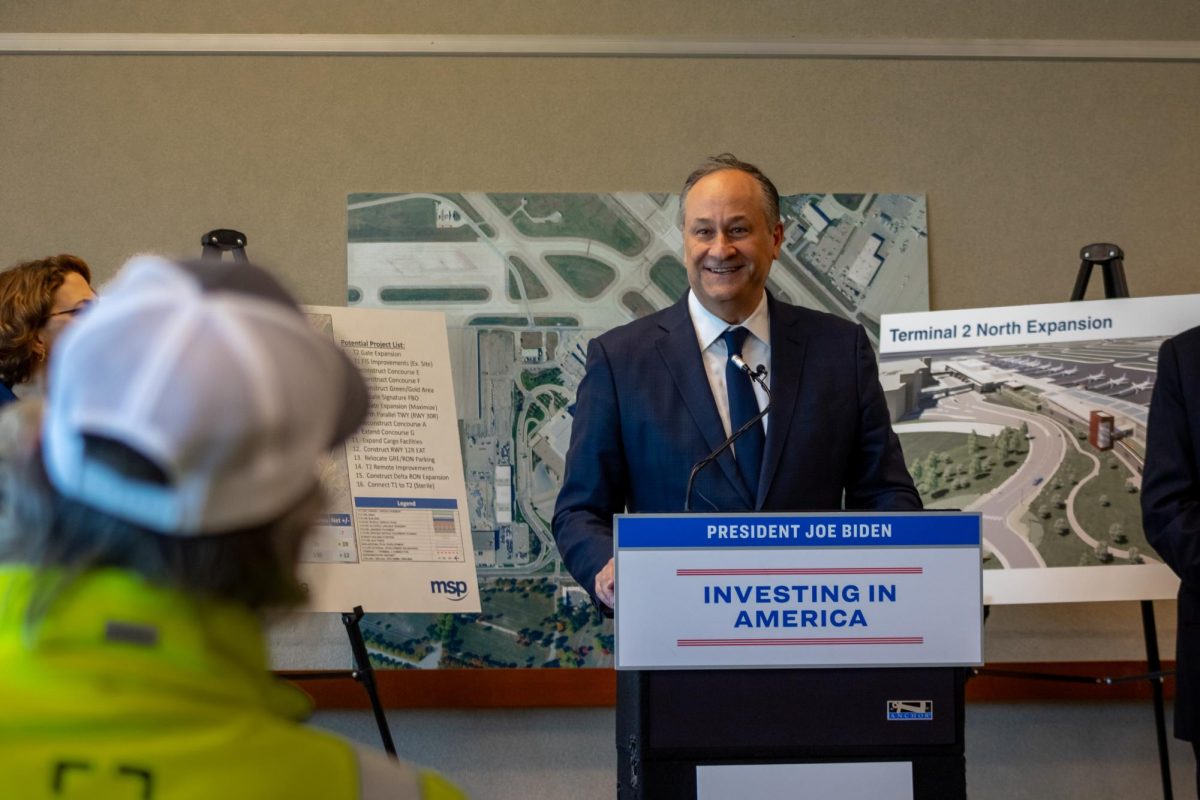While scientists and researchers are well versed in hot-button issues like climate change, University of Minnesota researcher Patrick Hamilton said he thinks science museums and educational institutions can get the public more involved. As a part of the Institute on the EnvironmentâÄôs year-long seminar series, Hamilton held a lecture Wednesday in St. Paul, speaking about initiatives educational institutions and science museums can take. According to Hamilton, an effective method of informing people about an issue is to set up interactive exhibits that engage people and educate them on the immediate effects it can have on their lives. âÄúPeople like real, tangible demonstrations,âÄù Hamilton said. He is currently the director of environmental and Earth-systems science programs at the Science Museum of Minnesota. The science museum partners with the UniversityâÄôs National Center for Earth-Surface Dynamics designing comprehensive exhibits for museum attendees and younger audiences. In 2007, a collaborative effort involving the science museum and the NCED opened at New York CityâÄôs American Museum of Natural History. The 7,500-square foot exhibit âÄúWater: H20 = LifeâÄù was an interactive exhibit addressing the role of water and its impact on land and humans. NCED also worked with the science museum to create a 6-foot video projection system that displays dynamic images of the EarthâÄôs surface using an animated globe. The project, Science on a Sphere, is used in undergraduate Earth science classes. HamiltonâÄôs lecture touched on what he described as the alarming number of Americans who are apathetic or skeptical of the issue. A 2008 study conducted by Yale and George Mason University researchers showed 7 percent of Americans were dismissive of climate change and 11 percent were doubtful. An additional study published in 2010 showed the percentage of dismissive attitudes had risen to 16 percent, while 13 percent remained doubtful. âÄúHumans are pushing a lot of buttons and changing the planet in ways itâÄôs never been changed before,âÄù Hamilton said. Tom Donaghy, an associate editor at the Institute on Community Integration who attended the lecture, said exhibits have the potential to sway public opinion. âÄúI think if there are enough examples people see, theyâÄôll turn into believers,âÄù Donaghy said. As a part of a larger effort, Hamilton recently authored a proposal to create a nationwide network of partnerships between museums and environment institutes. The proposal was submitted to the National Science Foundation in November. Hamilton thinks the network could allow the partnerships to distribute products and resources to other institutions.
U researcher: Public is key to environmental success
Patrick Hamilton said science museums and interactive activities are important.
by Raghav Mehta
Published March 10, 2010
0
More to Discover







